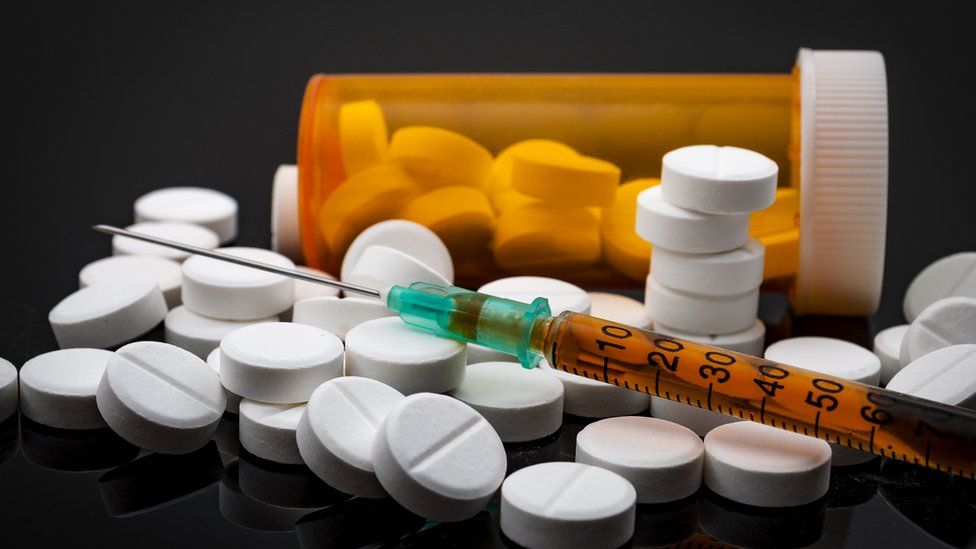What are opioids and what are the risks?
- Published

US President Donald Trump has announced measures to combat the country's opioid crisis. But what are these drugs and why are they such a problem?
What are opioids?
Opioids are a group of drugs that range from codeine, to illegal drugs like heroin.
Prescription opioids are primarily used for pain relief.
They work by attaching to opioid receptors in your brain cells to release signals that block your perception of pain and boost your feelings of pleasure.
The strongest legal treatments are usually only available by prescription from a doctor and include:
- morphine
- tramadol
- fentanyl
- methadone
- diamorphine
- alfentanil
What are they used for?
Opioids are generally used for moderate and severe pain relief.
They are intended to be used for a limited period of time to treat pain that does not respond to standard painkillers like aspirin, ibuprofen and paracetamol.
Examples of when the drugs are likely to be used include aiding with acute pain - such as after surgery - or for cancer patients or people at the end of life.
Why are they dangerous?
While there are good reasons for taking opioids, they can be highly addictive.
The feelings of pleasure that result from taking an opioid can also make people want to continue experiencing those feelings, which can contribute to psychological dependence on the drugs.
At lower doses, opioids can make people feel sleepy, but higher doses of the drugs can slow your breathing and heart rate, which can lead to death.
Mixing any opioid painkillers with alcohol, or with other sedatives such as benzodiazepines, can also have serious consequences.
Why are they so heavily prescribed in the US?
Unlike many European countries, the US does not have universal healthcare paid for by taxes.
Instead, Americans must get their own insurance - usually via an employer or the government.
Professor Judith Feinberg from the West Virginia University School of Medicine told the BBC that opioids are easy to prescribe, and for many poor people their insurance won't pay for anything but a pill.
"Say you have a patient that's 45 years old. They have lower back pain, you examine them, they have a muscle spasm.
"Really the best thing is physical therapy, but no one will pay for that. So doctors get very ready to pull out the prescription pad."
Is this just a US problem?
President Trump called the opioid epidemic a "national shame" in October and declared it a public health emergency.
The figures in America are certainly stark.
Every year, tens of thousands of Americans die from opioid use, with figures recently showing a 30% increase in overdoses there in the last year.
The country also gets 30 times more opioid pain relief medication than it needs.
But there are fears that the problem could spread to other countries.
In the UK the NHS has been accused of fuelling an "addiction crisis" after nearly 24 million opioids were prescribed in 2017 - 10 million more than in 2007.
But elsewhere millions of people in other parts of the world can't get hold of the drugs.
For example, Nigeria gets just 0.2% of what it needs, India 4%, China 16% and Mexico 36%.
Diederik Lohman, from Human Rights Watch, said the tough international rhetoric on opioids has led in some countries to "opiophobia... an irrational fear around the use of these medications".
- Published25 October 2017
- Published1 February 2018
- Published6 March 2018